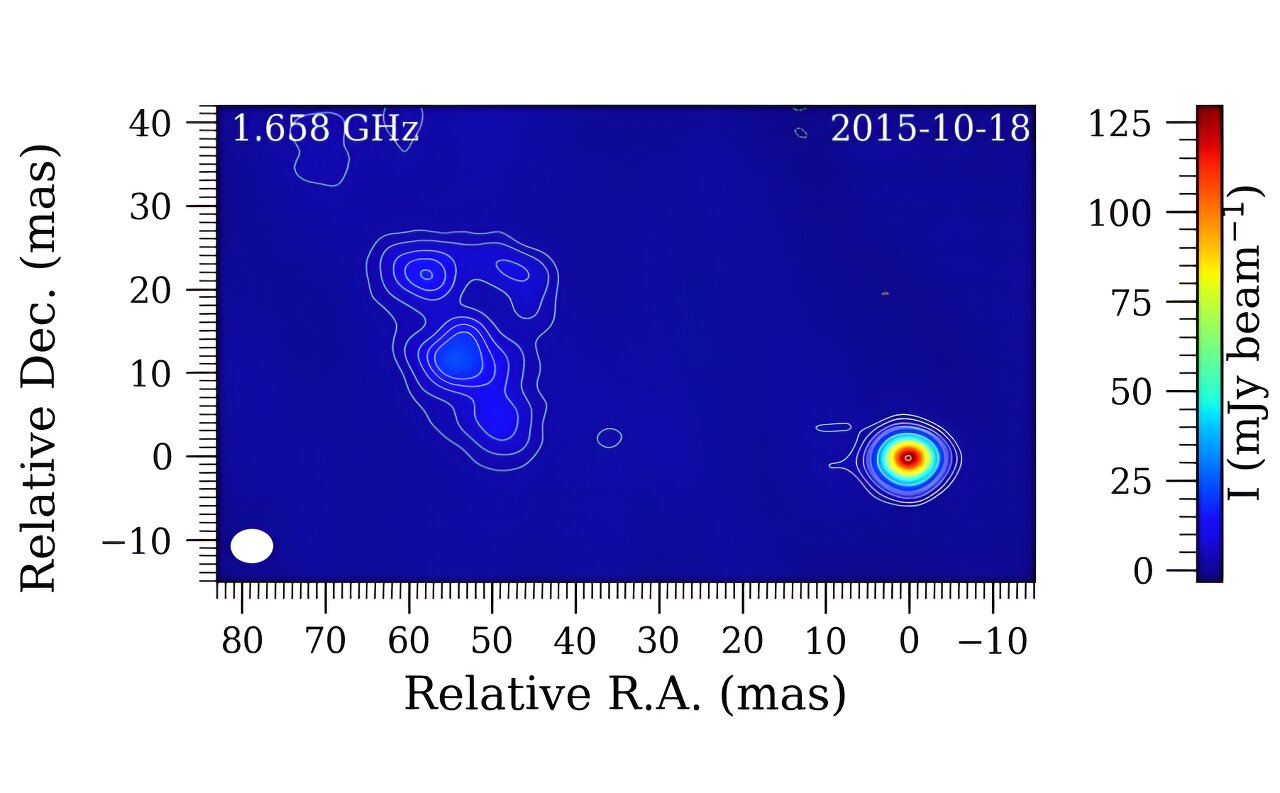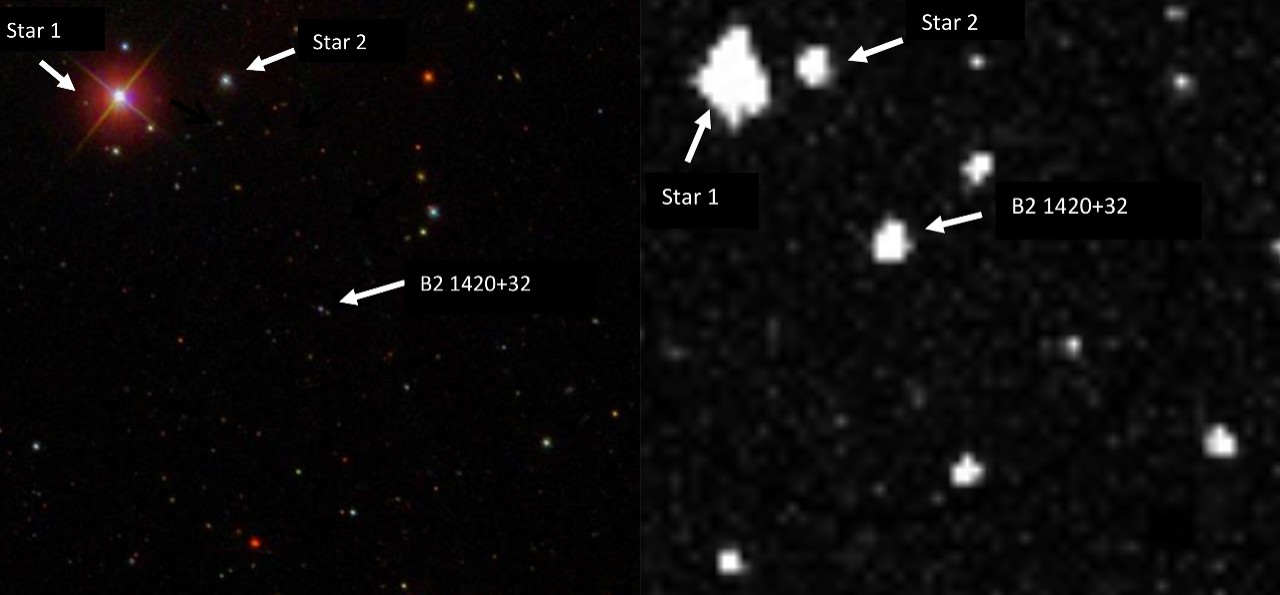
European astronomers have conducted very long baseline interferometric (VLBI) observations of a radio jet structure in a powerful quasar known as PKS 2215+020. The collected VLBI data provide important insights into the properties of this jet, suggesting that PKS 2215+020 is a blazar. The findings were presented February 17 in the Universe journal.
Quasars, or quasi-stellar objects (QSOs) are active galactic nuclei (AGN) of very high luminosity, emitting electromagnetic radiation observable in radio, infrared, visible, ultraviolet and X-ray wavelengths.
They are among the brightest and most distant objects in the known universe, and serve as fundamental tools for numerous studies in as...
Read More







Recent Comments